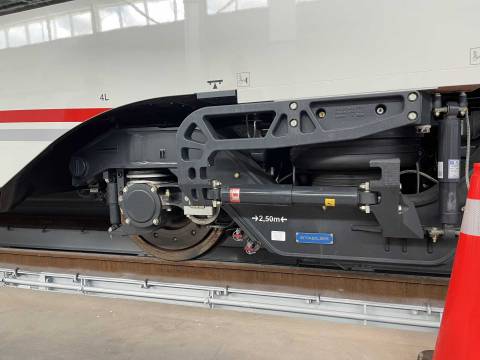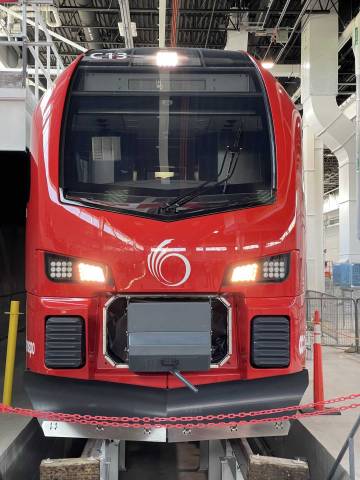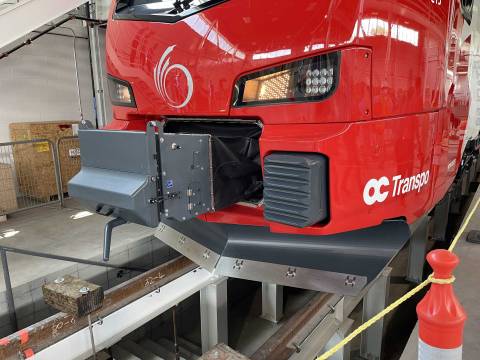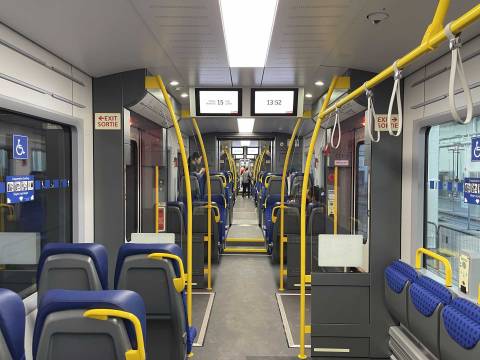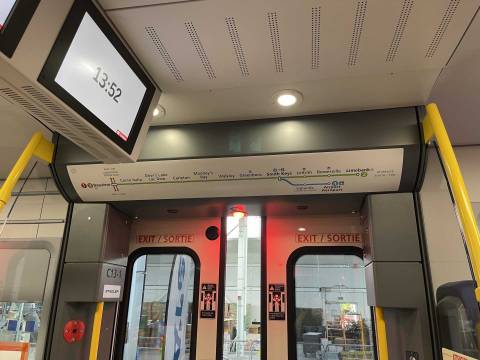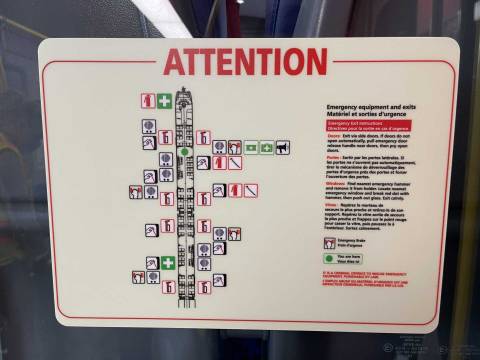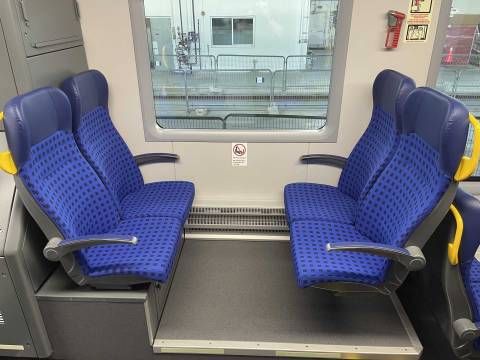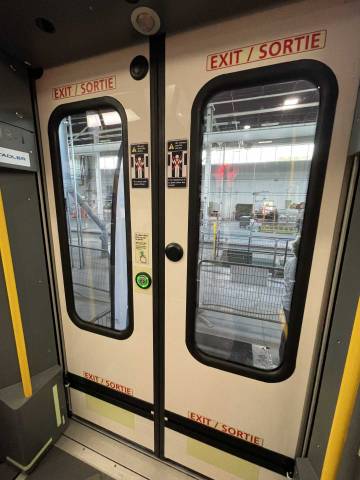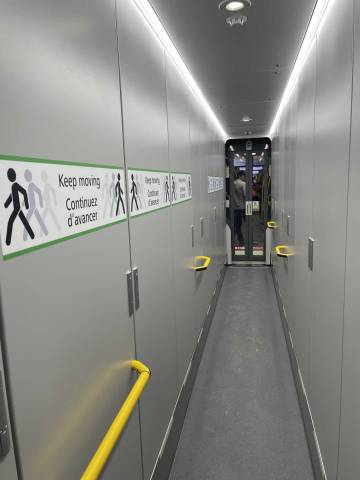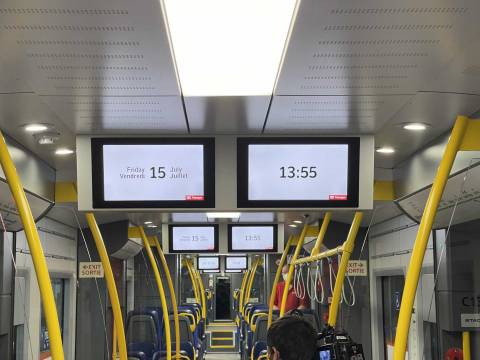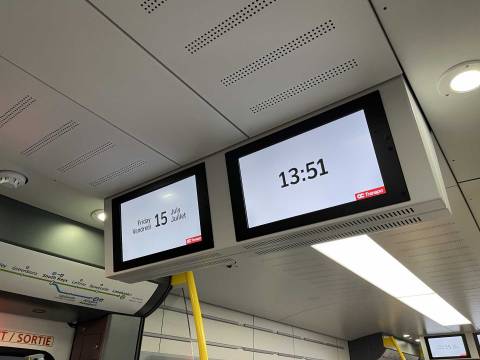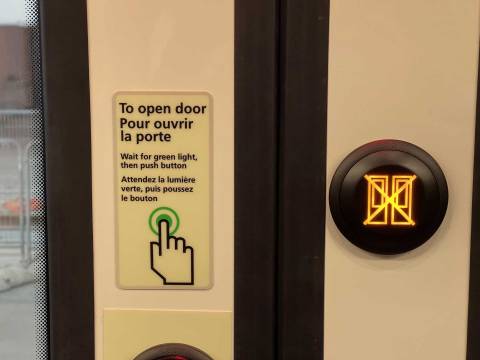Stadler FLIRT
As part of Stage 2 LRT project, new vehicles were needed to increase capacity along the extended Line 2, leading to a new order for seven Stadler FLIRT trainsets to be announced by the City on May 3, 2018. While it is the first time they will be used in Canada, the FLIRT (Fast Light Intercity Regional Train) is widely popular in Europe, operating on various regional railways as well as intercity services. This also marks the first time that Stadler has an order in Canada.
Those seven new trains will form the backbone of the service on Line 2, with six of them operating on a daily basis, with the other unit serving as spare. As part of the upgrades done on Line 2, those trains are measuring 81.1m, the longest to date. This decision was taken in order to increase passenger capacity on the line. The trains are built and assembled in Stadler's Switzerland factory, then transported overseas to Ottawa for final inspection and delivery. As of 2022, all trains have been delivered and are ongoing testing on the initial segment of Line 2 between South-Keys and Leitrim. The trains are planned to enter service at the same time as the extended Line opens in 2023.
The Stadler FLIRT is a Diesel Electric Multiple Unit (DEMU) trainset consisting of 4 cars and 1 "Power Pack" in the middle of the consist. Cars are semi-permanently attached, though they can be separated in the maintenance facility at Walkley should a need arise. The tractive effort is provided by electric motors, which are powered through the "Power Pack" that contains a diesel prime-mover that powers the motors, as well as the onboard systems. Should Line 2 be electrified in the future, the Power Pack can be removed and replaced with various sorts of electrical pick-up systems. As the trains are already built on electric motors for their tractive effort, the modifications needed are minimal and do not require a complete rebuild of the units should funds become available. This design also allows for the trains to accelerate effortlessly, alike a fully-electric train, and to have regenerative breaking, reducing the consumption of diesel by storing excess energy. The trains are fully compliant with EPA Tier 4 regulations to reduce the amount of NOx released during operations.
For passengers, the Stadler FLIRT is a considerable improvement for Line 2. With 16 doors total, 8 on each side, boarding speed is increased and is also enable for level-boarding at all stations. Doors will only open when a passenger requests for it to open by pressing the button located inside and outside of the train. Seating retains the "classic" blue shade and pattern seen on previous Line 2 rolling stock, though they now include foldable arm-rests on most seats. For users with reduced mobility, both ends of the train have larger areas for passengers, accessible through two different doors: in the event of a breakage, the train can still remain on service and allow access for all. Inside, modern seats, large windows, full LED lighting are the first element many will notice. The trains have passenger information displays that will show upcoming stops, time of day and are visible for all passengers onboard, regardless of where they are seating, in addition to audible messages broadcasted throughout the train. If someone desires to do so, the train is walkable from one end to the other: a small walkway is found through the Power Pack that connects both halves of the train, however it is not advised to remain in that part of the train for safety reasons. The trains are equiped with air conditioning and heating throughout to ensure the comfort of passenger and operator all year round. The train is not fully accessible throughout: some areas are only accessible through steps as a result of the bogey design and connection between cars. However, there is considerably more space for passengers with mobility issues than the former LINT trains used on Line 2.
To ensure the safety of all passengers, CCTVs are installed throughout and offer coverage of all passenger areas. Should an issue arise, emergency breaking and direct intercom with the conductor are installed at various locations throughout the train to address them as soon as possible. The train uses a variation of Positive Train Control systems (PTC) to ensure safe operation throughout the line and avoid conflicts between vehicles, replacing the previously used Indusi system.


